Details
Description
SKU: CF.CPS251F
Composed by Patrick Glenn Harper. Full score. 25 pages. Carl Fischer Music #CPS251F. Published by Carl Fischer Music (CF.CPS251F).ISBN 9781491159880. UPC: 680160918478.
About the Music Semper Gratus is Latin for "always grateful." The piece was written in honor of James E. Champion, who taught band for thirty-eight years, twenty-five of which were spent in Florence, Alabama, where he was my elementary school and high school band director. His bands consistently achieved superior ratings throughout his career. He holds multi-decade-spanning memberships in professional music education organizations, continues to serve in helping with Alabama Bandmasters Association events, and conducts and performs in various community bands and ensembles. As my band director at Bradshaw High School, Mr. Champion encouraged me to perform one of my first compositions, a clarinet quartet, at solo/ensemble festival. He taught his students the fundamentals of music, the technical aspects of performance, and exposed them to the great standards of band literature. But in doing so, he also modeled leadership, work-ethic, good character, and fostered the love of the activity of band that led me to choose music education as a career. And for that, I will always be grateful. Performance Notes Measures 1-12: The beginning of the piece should be performed in a majestic, fanfare-like style. The woodwind cues should only be used if absolutely needed during this section. Measures 41-58: The concert toms should establish a presence, but not overpower the winds. The triangle and woodblock parts should be heard distinctly over the concert toms. A higher pitched woodblock should be used for this section. (A set of claves could be used in place of the woodblock if desired.) Measures 59-94: The entirety of the middle section should be played in a rubato style to maximize musical expression, exaggerating dynamics and ritardando sections. The quarter-note triplets in the middle and low winds should be emphasized at m. 70. The molto ritardando that begins at m. 70 should be allowed to build as long as possible in m. 71 before reaching the musical apex of the middle section at m. 72. At mm. 92-94, depending on the size of the ensemble, you may want to limit the number of players (or put one per part) to achieve the most delicate sound possible. Measures 95-End: In mm. 99-107, be sure that the eighth-note running mallet parts are heard as a background texture, but do not overpower the winds. In mm. 114-115, the accents on beats 2 and 4 in the lower winds should be exaggerated to contrast the feel of the previous four measures. In m. 118, all winds should cut off and breathe on beat two for maximum impact on the next three measures.
About the MusicSemper Gratus is Latin for “always grateful.” The piece was written in honor of James E. Champion, who taught band for thirty-eight years, twenty-five of which were spent in Florence, Alabama, where he was my elementary school and high school band director. His bands consistently achieved superior ratings throughout his career. He holds multi-decade-spanning memberships in professional music education organizations, continues to serve in helping with Alabama Bandmasters Association events, and conducts and performs in various community bands and ensembles. As my band director at Bradshaw High School, Mr. Champion encouraged me to perform one of my first compositions, a clarinet quartet, at solo/ensemble festival. He taught his students the fundamentals of music, the technical aspects of performance, and exposed them to the great standards of band literature. But in doing so, he also modeled leadership, work-ethic, good character, and fostered the love of the activity of band that led me to choose music education as a career. And for that, I will always be grateful.Performance NotesMeasures 1-12: The beginning of the piece should be performed in a majestic, fanfare-like style. The woodwind cues should only be used if absolutely needed during this section.Measures 41-58: The concert toms should establish a presence, but not overpower the winds. The triangle and woodblock parts should be heard distinctly over the concert toms. A higher pitched woodblock should be used for this section. (A set of claves could be used in place of the woodblock if desired.) Measures 59-94: The entirety of the middle section should be played in a rubato style to maximize musical expression, exaggerating dynamics and ritardando sections. The quarter-note triplets in the middle and low winds should be emphasized at m. 70. The molto ritardando that begins at m. 70 should be allowed to build as long as possible in m. 71 before reaching the musical apex of the middle section at m. 72. At mm. 92–94, depending on the size of the ensemble, you may want to limit the number of players (or put one per part) to achieve the most delicate sound possible.Measures 95-End: In mm. 99–107, be sure that the eighth-note running mallet parts are heard as a background texture, but do not overpower the winds. In mm. 114–115, the accents on beats 2 and 4 in the lower winds should be exaggerated to contrast the feel of the previous four measures. In m. 118, all winds should cut off and breathe on beat two for maximum impact on the next three measures.
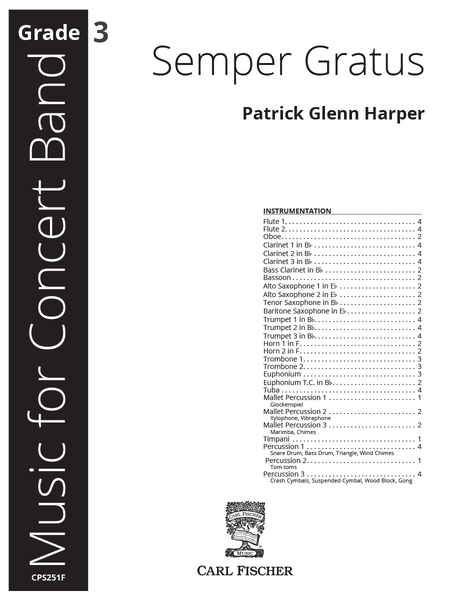
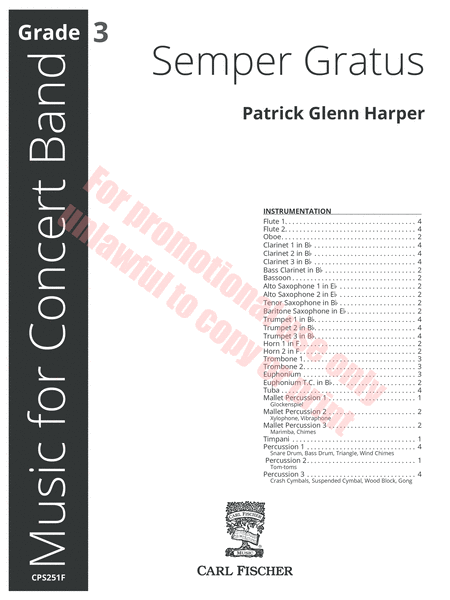
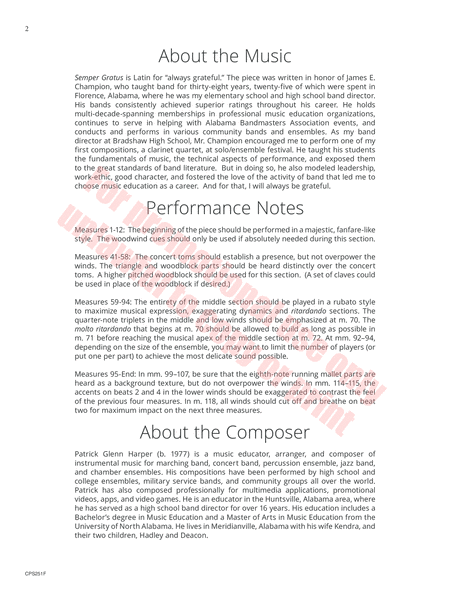
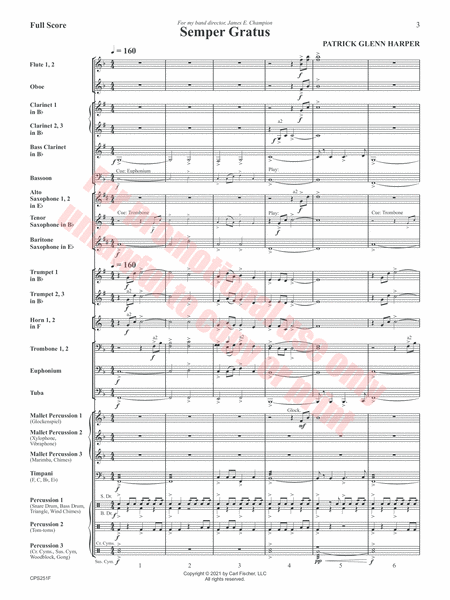
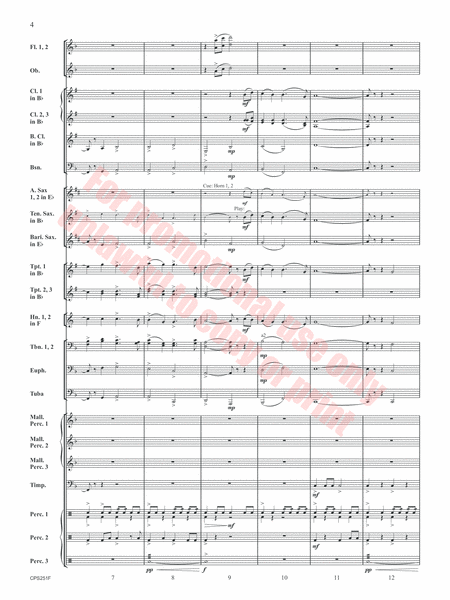
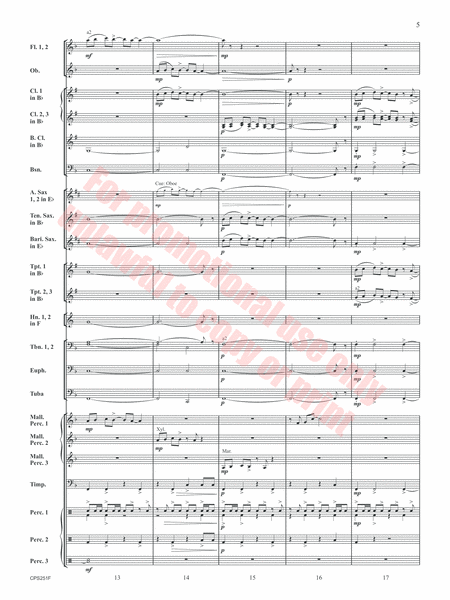
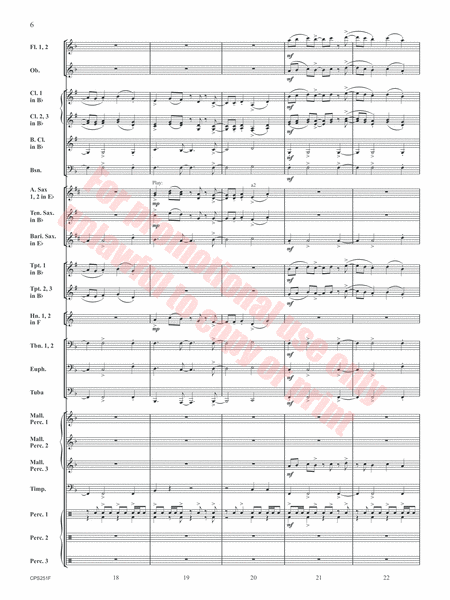
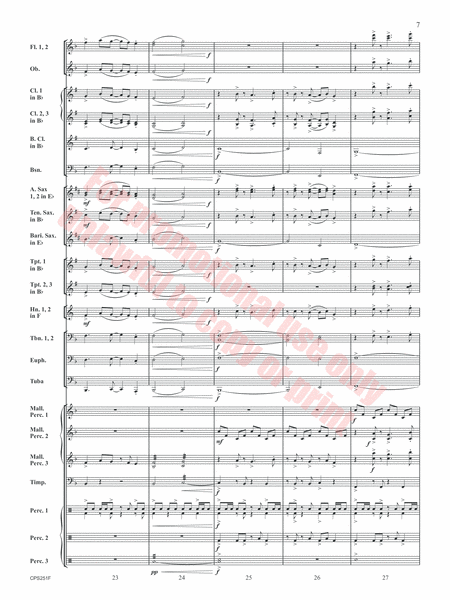
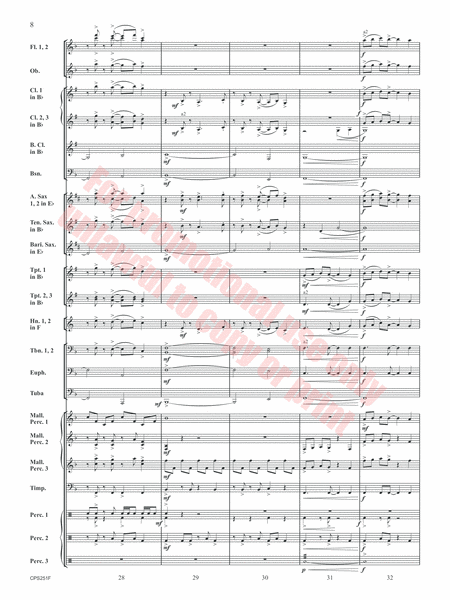
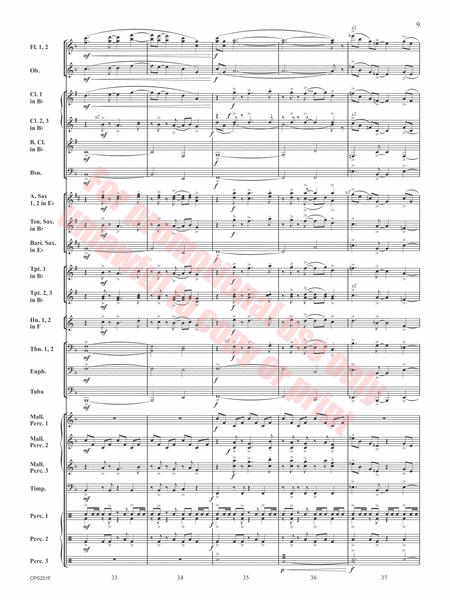
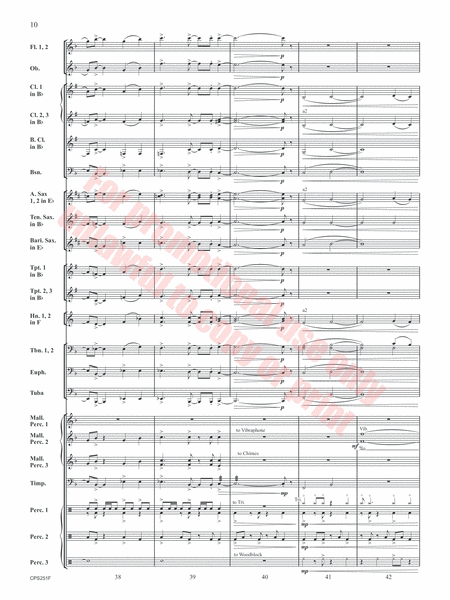
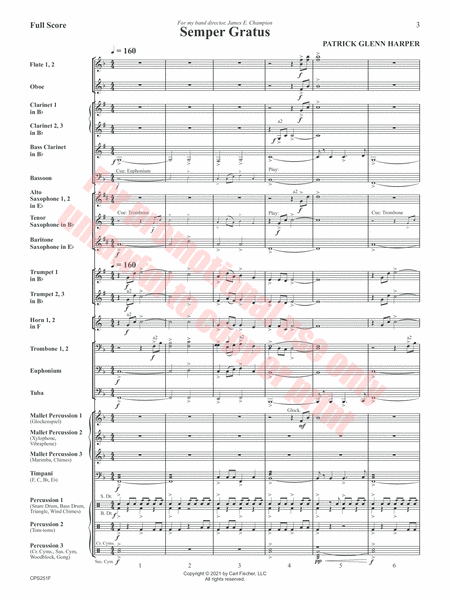
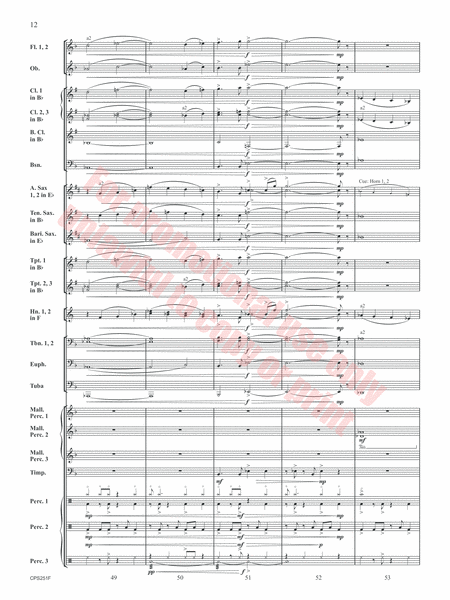
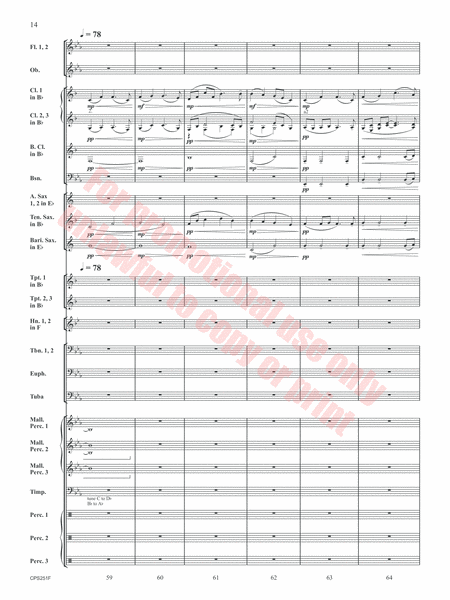
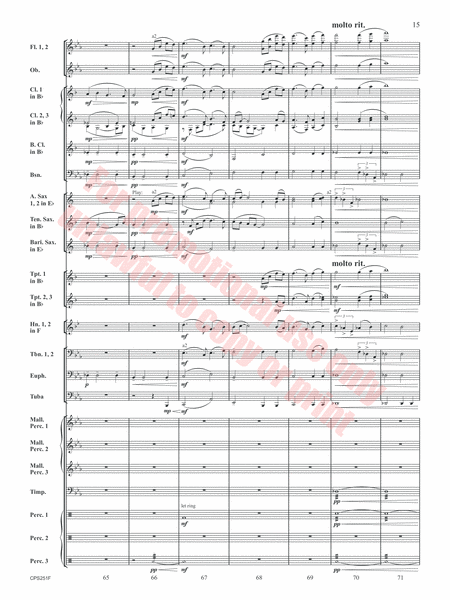
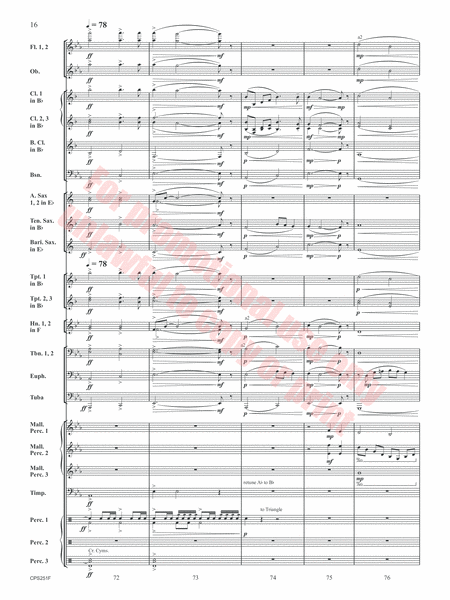
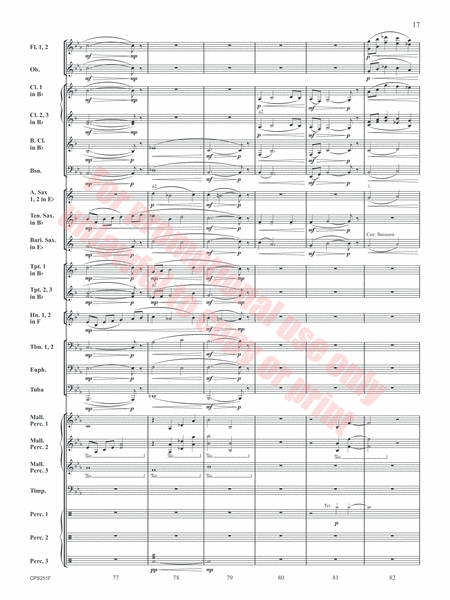
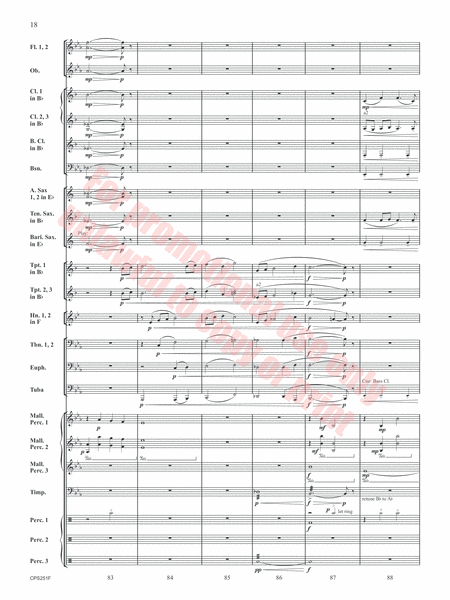
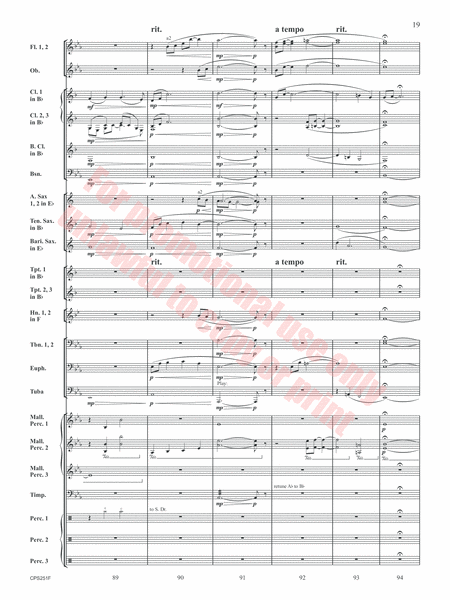
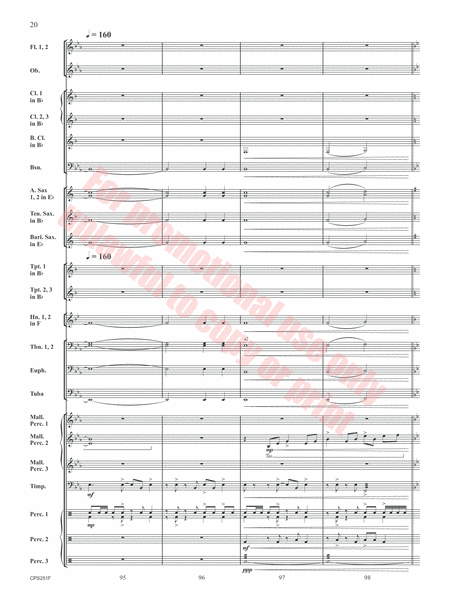
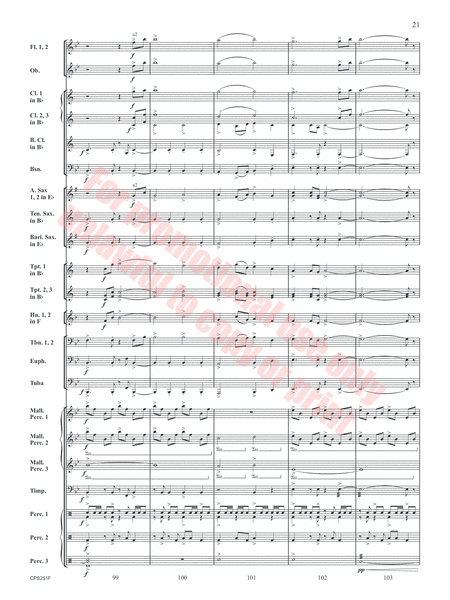
 Share
Share